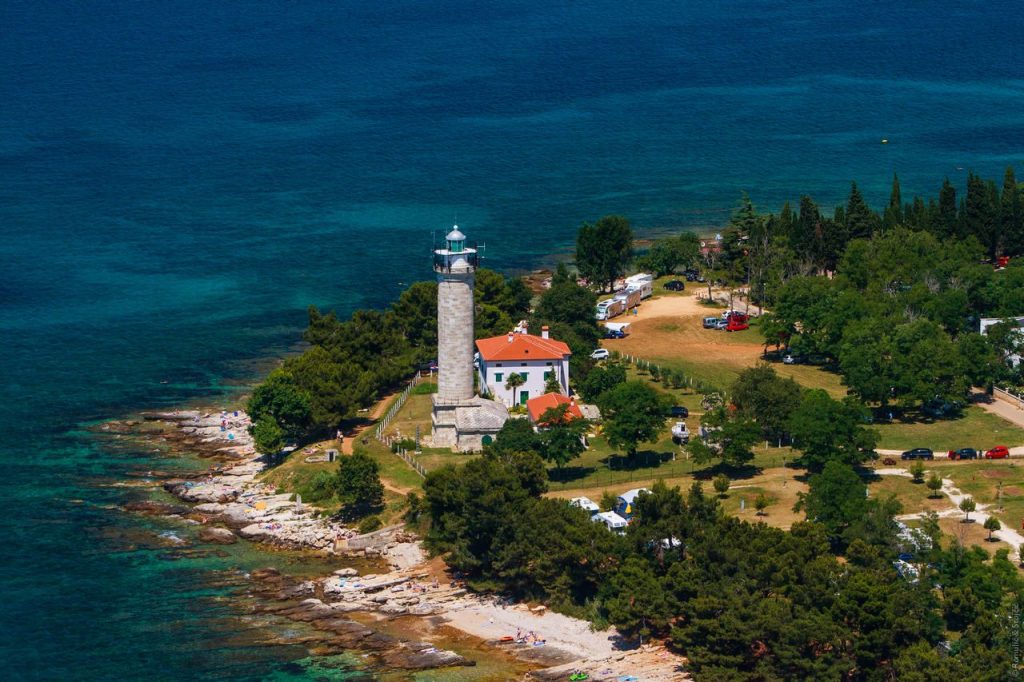While Nina Kraljic is singing about her own Lighthouse in this year’s Eurovision Song Contest, here are some of Croatia’s most breathtaking lighthouses.
With all the talks of yet another busy tourist season, crowds, parties, and events, maybe some of you were under the impression that Croatia cannot offer quiet holiday options in remote places where you can avoid all of the above. So, if you’re after something completely different, on May 11, 2016, we bring you a list of Croatia’s breathtaking lighthouses. On any of them, you will be able to unwind, recharge and most importantly, find the much-needed solace and you don’t ever have to worry about towel space on the beach.
1.Savudria
Photo copyright Romulić & Stojčić
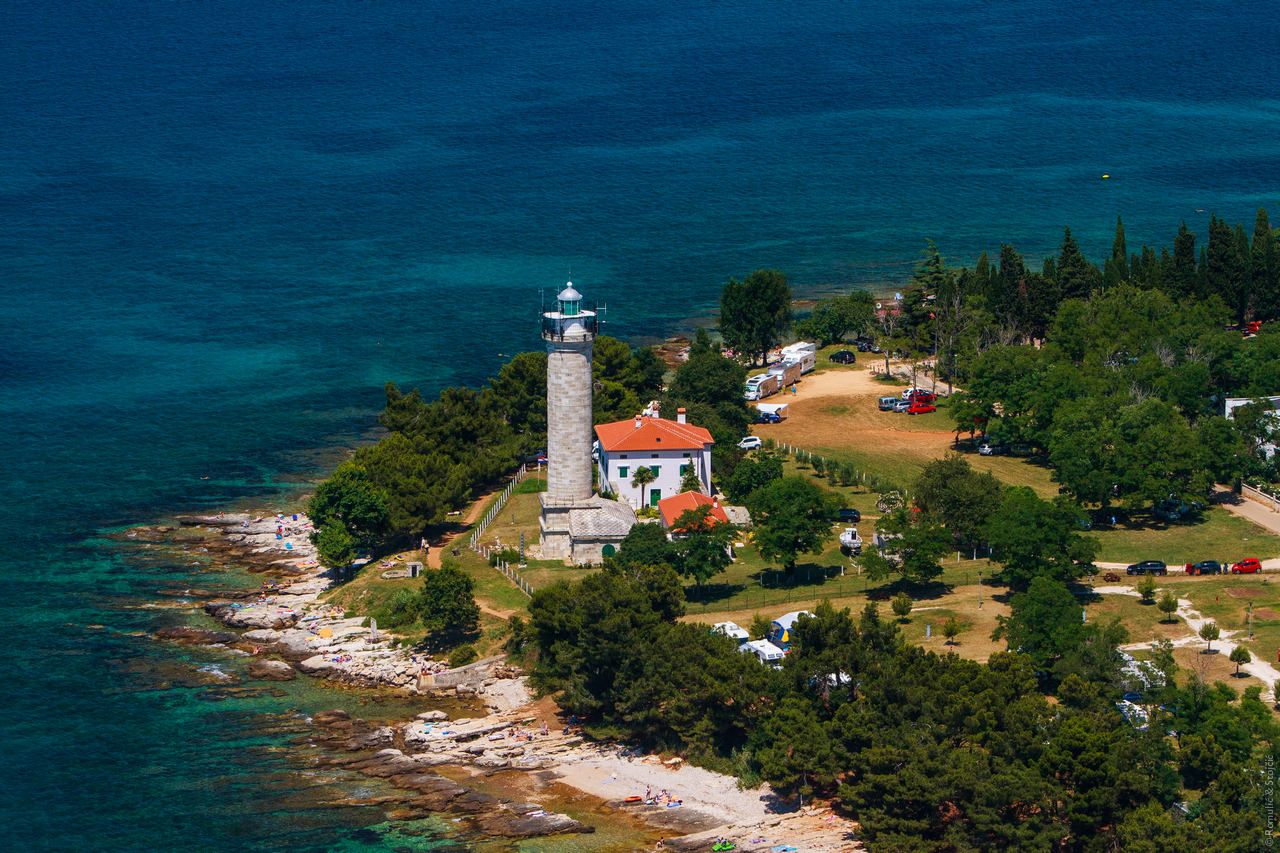
Even though it’s not on an island and it is far from isolated, Savudrija or Salvore lighthouse is one of the most popular ones in Croatia. With Umag just 9 km away, you’ll be able to “taste” the nightlife and the city hustle and bustle if you get the itch to move your feet. This 38-metre tall lighthouse is one of the oldest in Croatia, built back in 1818, and it was the first lighthouse in the world to derive its light from coal distillation. Even though it was financed by Austrian emperor Francis I (as mentioned in the inscription on the monument) and designed at the request the Stock Exchange Deputation from Trieste (nowadays Chamber of Commerce) old folk’s tale states that it was actually built by Count Meternich for a charming and graceful young noble woman from Croatia. He fell in love with her at a grand ball in Vienna, but, as faith would have it, ty never made it to the lighthouse since the lovely lady passed away on the day the lighthouse was finished and the Austrian Count never visited it after her passing.
Today, the lighthouse offers a total of 5 apartments, the largest one can accommodate up to 5 people.
2. Sveti Ivan – St. John near Rovinj
Photo copyright Romulić & Stojčić
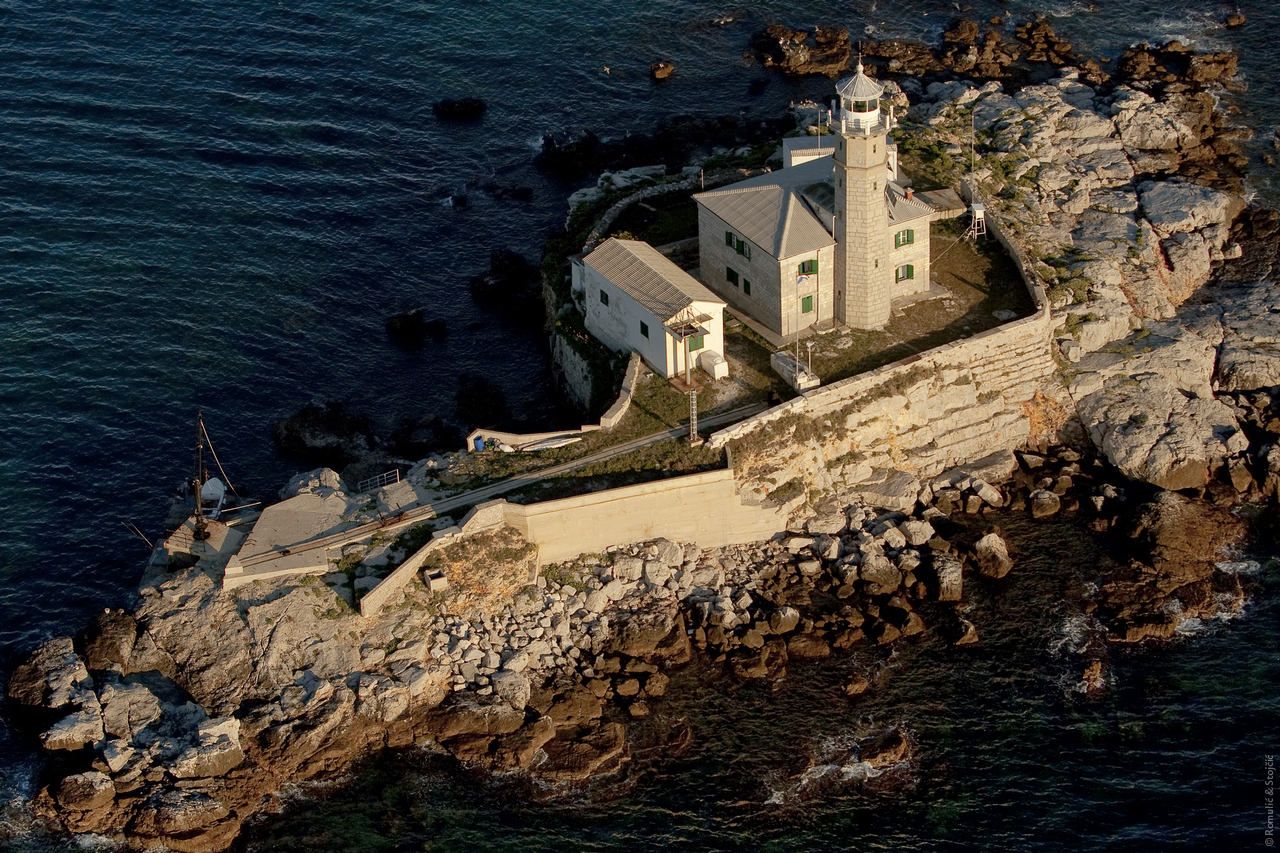
We’re still in Istria. St. John’s lighthouse (Sveti Ivan in Croatian) is built on a 50 x 70 m cliff in the archipelago in front of the renowned Istrian tourist destination Rovinj. The lighthouse was built by the Austro-Hungarian authorities in 1853, but it is also connected to a local legend. It says that a Venetian doge was sailing towards Rovinj and got caught in a bad storm. His crew spotted the dangerous cliffs of St. John and changed the route navigation avoiding them just minutes before an inevitable crash. After nearly biting the bullet, the Doge vowed to St. John that, should he reach Rovinj alive, he will light up a candle as tall as a tower of the cathedral to thank him for saving his life.
After he reached the port in one piece, the Doge failed to keep his promise and hurried back to Venice without lighting a candle. A few months later, on his next trip to Rovinj, he remembered his forgotten promise when another storm surprised him in the very same spot. His ship was thrown on the rocks of St. John and the entire crew disappeared in the stormy sea.
Today, the lighthouse offers two apartments for up to 4 people.
3. Porer cliff lighthouse
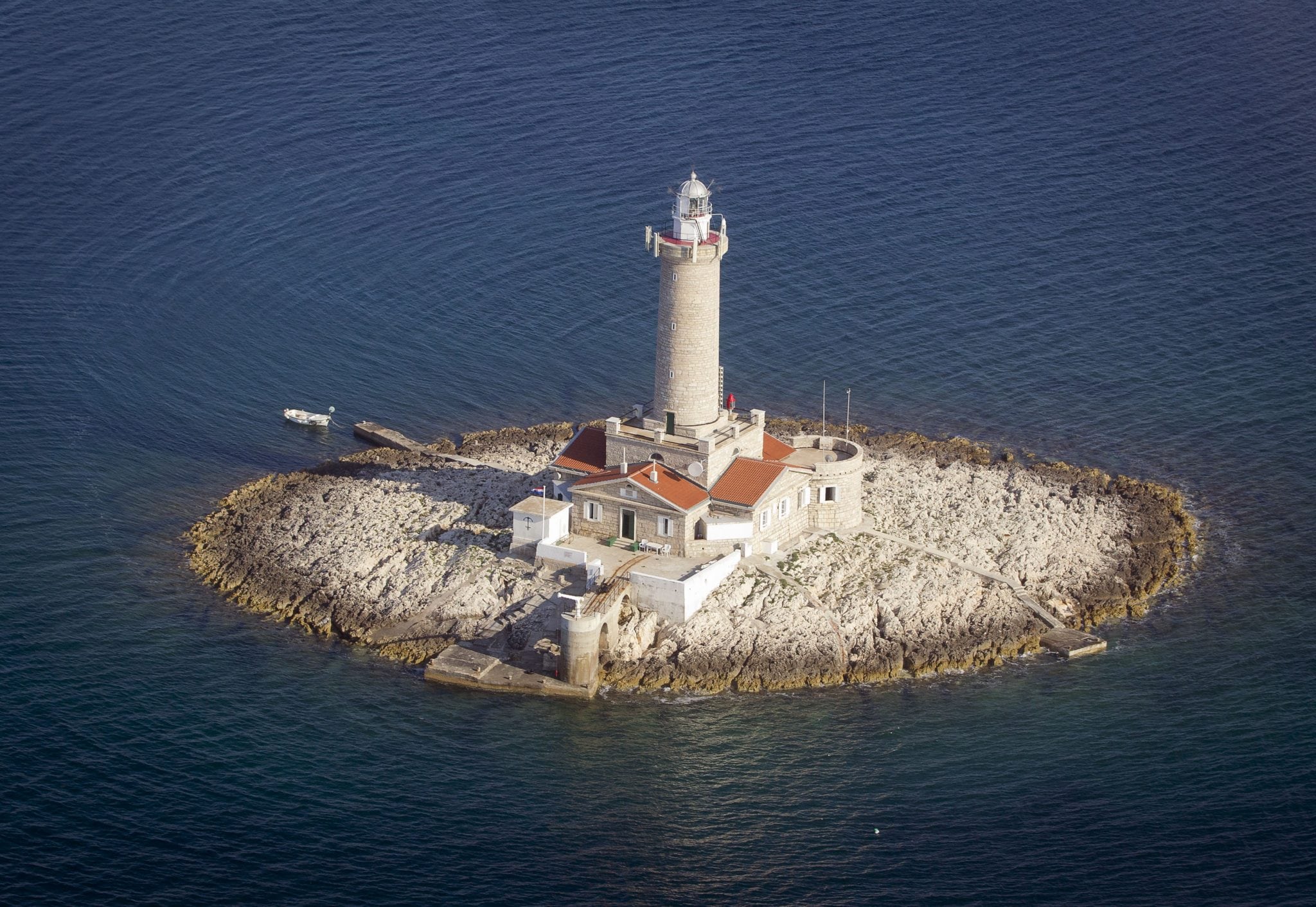
Another location for those looking for solace. The Porer lighthouse is situated on a rocky islet, a mile and a half southwest from the southernmost cape of Istria – Kamenjak, and it was built back in 1833. In case you need provisions, nearest town Premantura is 2,5 km away so even though you have found your perfect tranquil spot on the Adriatic, civilization is still close enough.
It’s still a mystery how the builders managed to construct the lighthouse considering it’s surrounded by quite turbulent sea, but even today numerous ancient artifacts can be found hidden in the layers of sand around the cliff and numerous ships have reportedly sunk around it and the islets of Kršin, Fenoliga and Veliki Barkun throughout history. Today it is a safe and tranquil retreat offering two apartments, each for up to 4 persons.
In 2010, a replica of the Porer lighthouse was included in the park of miniature buildings, Minimundus, in Austria near Klagenfurt. The park officials chose Porer because it is, they said, a familiar sight from Croatia. The model of the lighthouse was built in their workshop. 4000 pieces of limestone bricks were used and the construction lasted for half a year.
4. Veli rat
Photo copyright Romulić & Stojčić
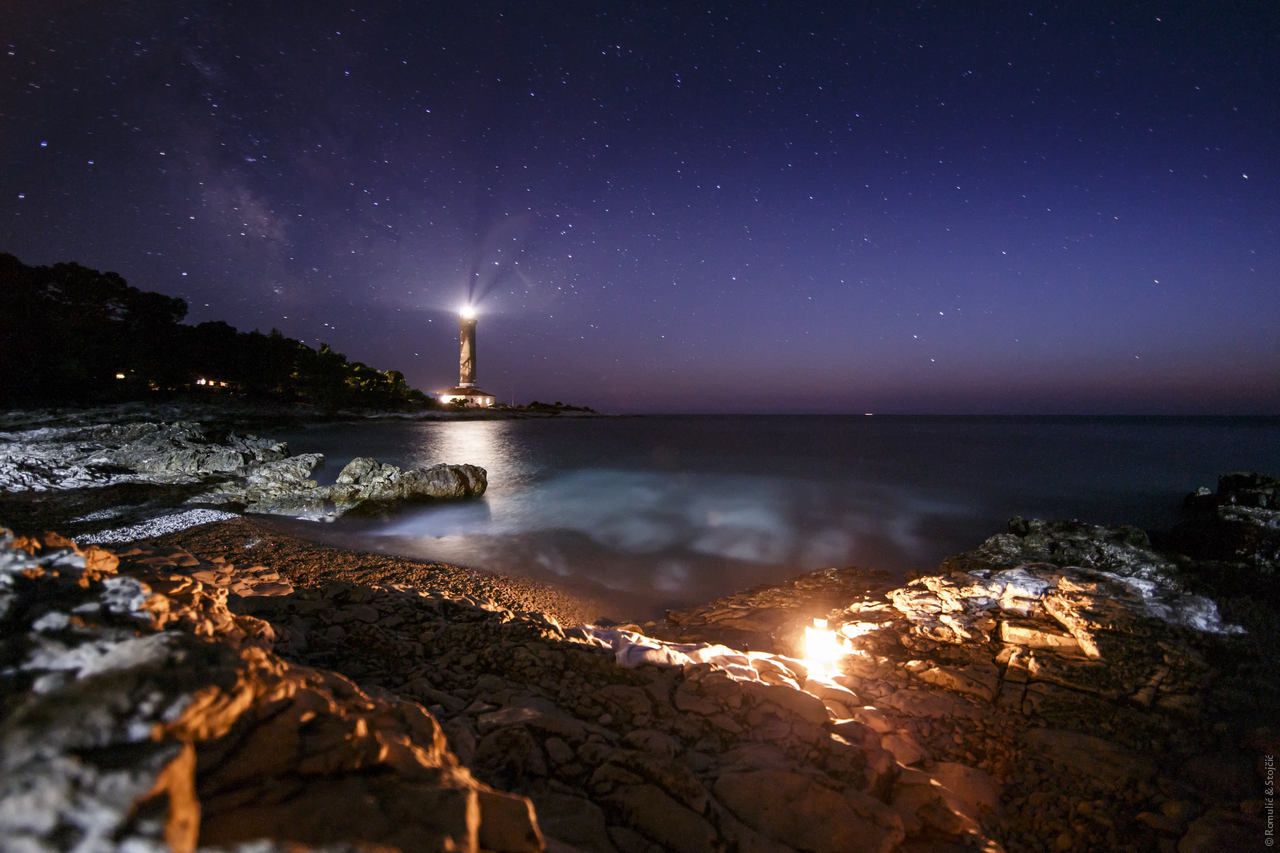
This active mainland lighthouse was built in 1849 and it is located on the southwestern cape of Dugi Otok, island 35 km west of Zadar. It is surrounded by thick pine forest on one side and bays and pebble beaches on the other. Considered one of the most beautiful lighthouses on the Adriatic, it’s 40 m high tower offers the best seat in the house when it comes to unforgettable sunsets over the crystal clear seas. Selfie anyone?
With one three bed and one four bed apartment, this is one of the most popular lighthouses in Croatia and sometimes you have to book a year in advance if you want to secure your spot during peak season. A small chapel was built under a century-old pine tree in the courtyard of the lighthouse, while the whole building was, the legend says, fortified with more than one thousand egg whites to help withstand the harsh weather conditions.
5. Tajer
Photo copyright Romulić & Stojčić
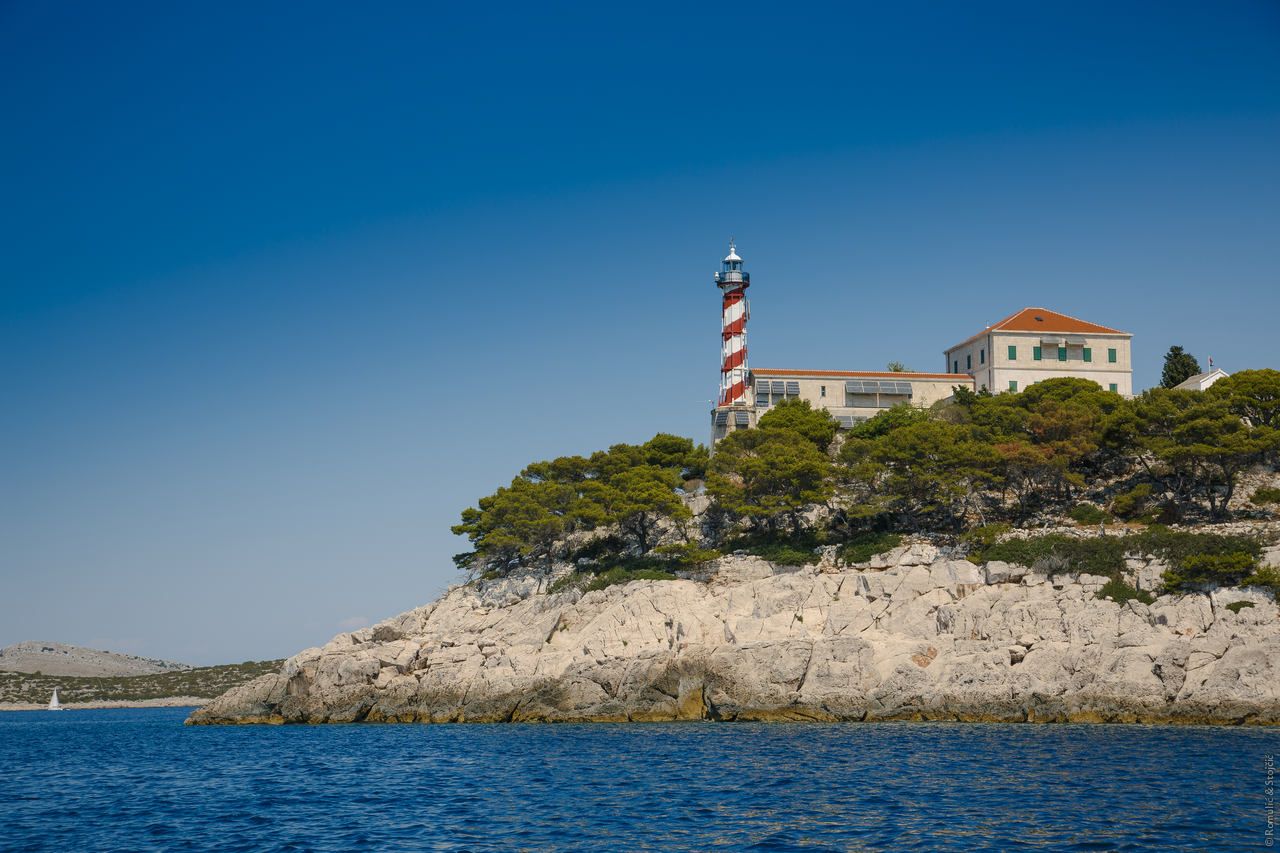
We’re staying close to Zadar, in the Kornati archipelago to be more exact. Two tiny islets, Tajer sisters present a fine border between the Kornati National park and Telaščica Park of nature. The lighthouse is located on the big sister, Sestrica Vela in the midst of a thick pine forest and it now offers two apartments for 4 persons. Its specific design, one of a building connected to the tower with an enclosed stone corridor is very reminiscent of lighthouses in the north of Scotland, but since Tajer was built in 1876, long before its Scottish counterparts, one has to wonder whether Scotish salesmen sailed the Kornati in search of suitable lighthouse designs.
The lighthouse tower was bought in France and is compiled for months before commissioning. It is the only iron tower on the Adriatic. This lighthouse is actually in the middle of an ornithological reservation and a rest stop for most bird species on their way to and from their long migration to warmer climates so it is a perfect destination for birdwatchers.
Of course, there’s a legend connected to this lighthouse. When you look at the sunset in front of the lighthouse, glance at the small flat cliff Taljurić by the southeast cape of Dugi Otok. If you’re lucky, you might see silhouettes of fairies. Kornati fishermen believe the fairies placed the Taljurić cliff there so they can dance on it at night. Any mortal that refuses their love will be turned into a coral flower and the one who answers their love song will stay with them forever. Maybe that’s the answer to the mysterious disappearance of young Kornati fishermen over the last three centuries?
6. Prišnjak
Photo copyright Romulić & Stojčić
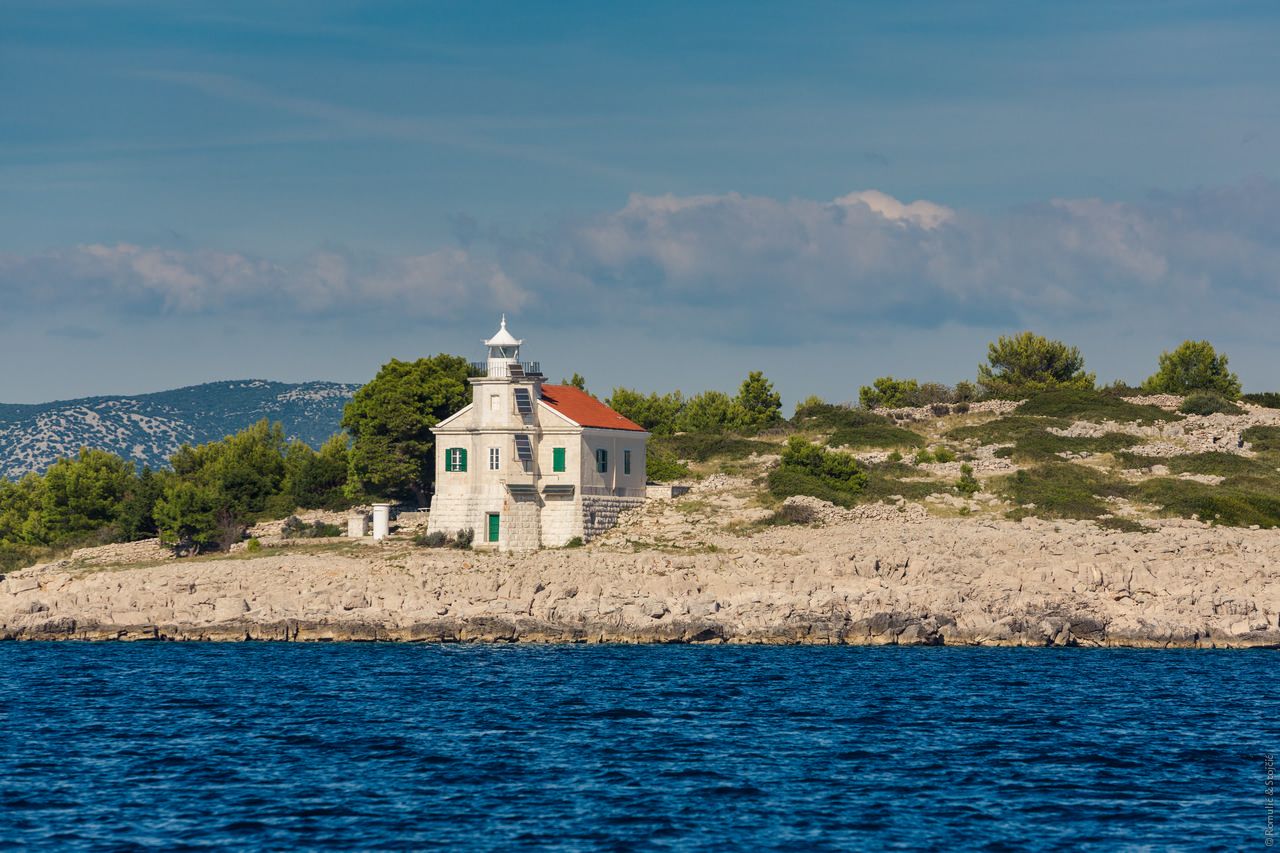
Prišnjak is one of the most picturesque islets near Murter and everything you’d imagine a lighthouse to be. It now offers one apartment for 4 people so during your stay it would be just you and a thousand shades of blue everywhere you look. With stone dry walls spread all over the tiny island like a spiderweb its a perfect representation of Dalmatia. The lighthouse was built in 1886 to help the captains navigate their way to Murter, a town only 300 m away. It doesn’t have an age old legend connected to it, but it has a real life story connected to it. Back in the 1950s, lighthousekeeper’s pregnant wife went into premature labour, and despite the keeper’s stellar rowing efforts, the baby was born on the boat and the boy was named Jadran (Adriatic). It’s probably the only person ever to have Prišnjak entered as the place of birth in official documents.
It is important to note Prišnjak is one of the most popular lighthouses in Croatia, it is full at least 6 months of the year so if you’re interested. make sure you book on time so you don’t miss out.
7. Sveti Petar (St. Peter’s lighthouse)
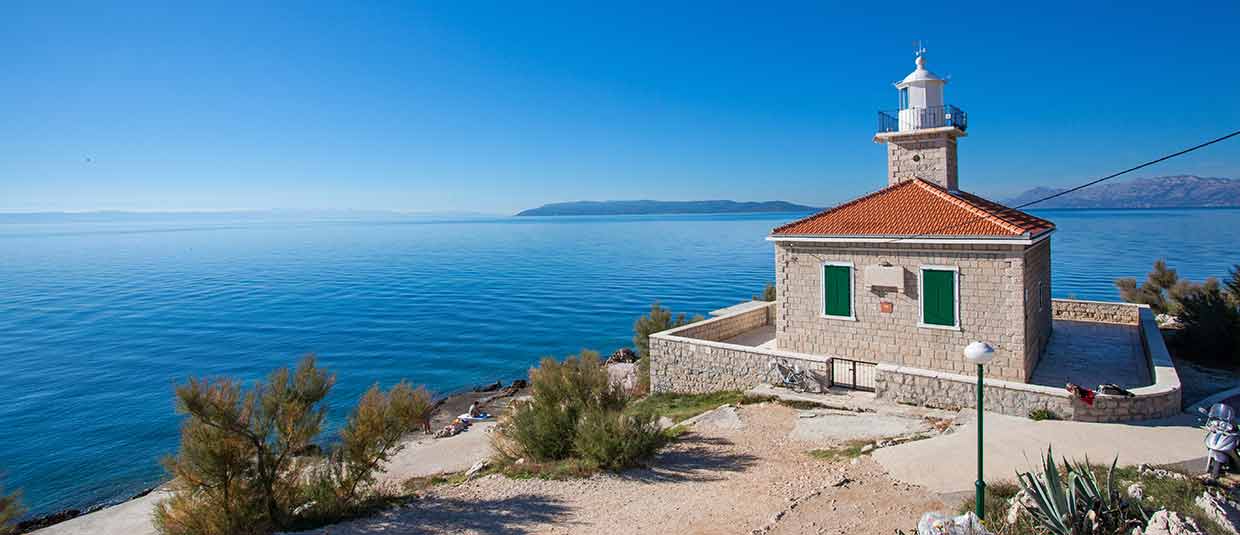
Going further south now all the way to Makarska. Even though it is not on a remote island, this lighthouse is still located in a secluded area on a peninsula just before the city entrance, 20 minutes walk from the town centre. It is surrounded by some of the most beautiful beaches in the area, a fact that adds to its appeal. No one knows who named this lighthouse after the first martyr and the keeper of the gatekeeper of heaven but there is certain symbolism in the name since this lighthouse does resemble the gateway to heaven.
Today, it offers one apartment for up to 6 people and all the modern amenities you’d expect in the 21st century.
8. Pločica
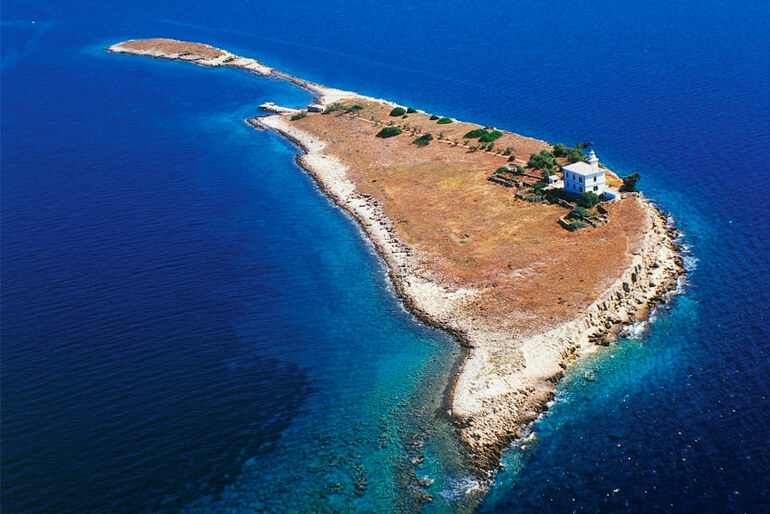
Nestled between the islands Korčula and Hvar, Pločica (little tablet) was named after its shape since it is very flat and low, and if you’re on Pakleni otoci and looking towards the island, it looks like a rather large ship coming your way. It can accommodate up to 14 people so it is a perfect destination for a group of friends or a large family.
The lighthouse was built in 1887 and it is surrounded by salt cedar (tamarisk) trees, most of which were planted by the very first keeper, and by century-old fig trees. Islet is renowned for the abundance of fish around it, and as the son of the first keeper says, when the Austrian – Hungarian government sent the very first primitive fishing net to this island, it took the villagers hours to take all the fish out. They stopped counting after they untangled 70 pieces of grouper from the net and threw the rest of the fish back into the sea because back in those days there were no boats to take the fish to the mainland to sell. This islet is still a favourite destination for many patient fishermen.
Once you arrive at the lighthouse, try and select the room in the northeast corner on the first floor and at dusk, open both windows and enjoy the dance of the lights from the lighthouses in Sućuraj on Hvar and Lovišće on Pelješac. The sky fires up with a translucent starry lace reminding you of some past times when we appreciated nature a bit more than we do today.
9. Struga
Photo copyright Romulić & Stojčić
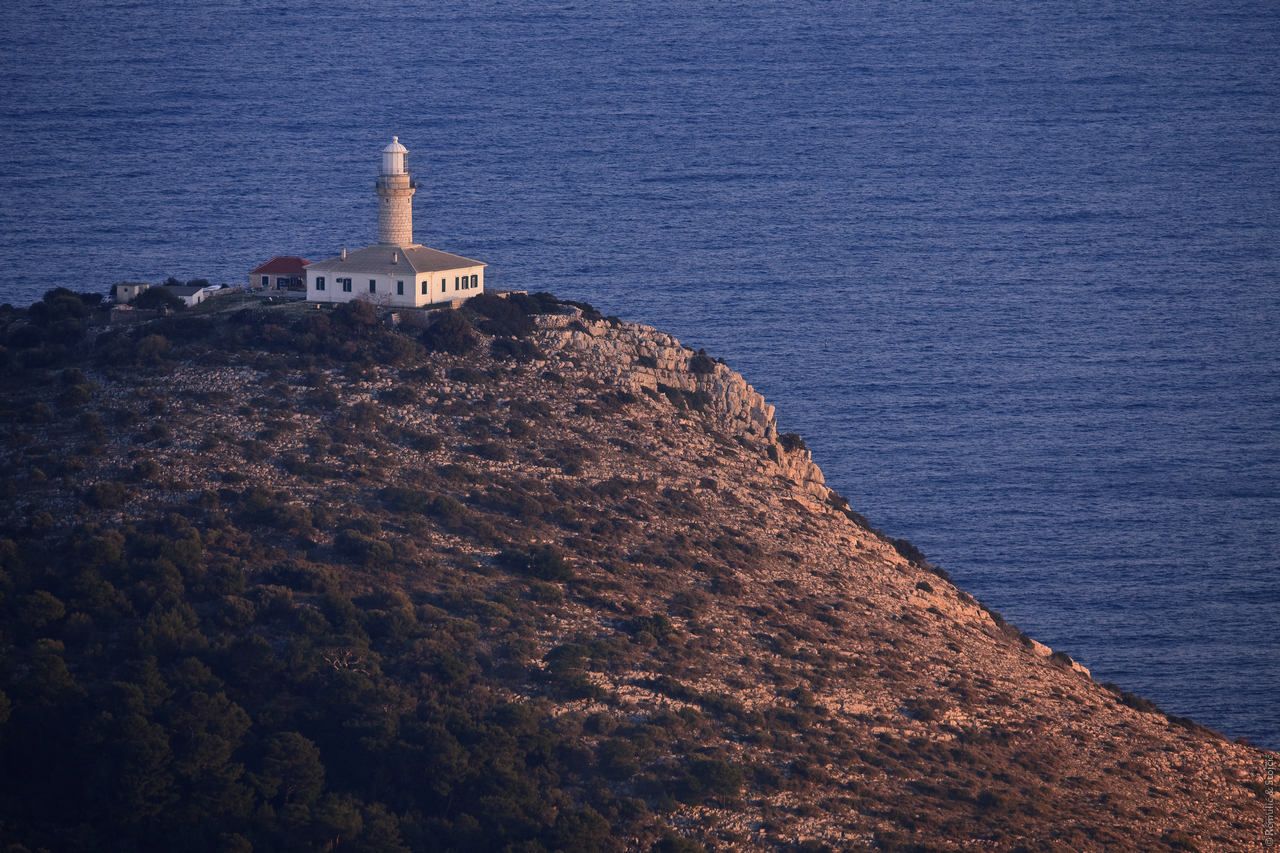
This lighthouse was built back in 1839 and it is located in the Cape of Struga, in the middle of the southern side of the island of Lastovo, at the entrance of Skrivena Luka bay. Built on top of a very steep cliff, the tower offers one of the most breathtaking views of the open sea on the Adriatic. Even before the lighthouse was built, women would climb up to the top of the cliff and wait for their husbands and sons to return from their fishing expeditions.
A story that is connected to this island might sound unbelievable but it is very true. At the end of the 19th century, fishermen caught an 18-kilo lobster in their fishing net and sent it to the Austrian – Hungarian Emperor Franz Joseph, who thanked them by sending them a large trunk of coffee and sugar. The largest coral tree ever to be pulled out of the Adriatic was found here in the 1950s. Magnificent views and easy access to the sea through the pine woods on the northern side of the lighthouse make Struga a very popular tourist destination.
Today, Struga lighthouse offers three apartments for 2, 4 or 5 persons.
10. Sušac
If you want the feeling that you’re standing on the edge of the world then this is the right place for you. Out of sailing corridors and secluded from the rest of the world, when you look at it from a distance, an optic illusion will have you thinking Sušac is actually two islands next to each other, a fact that used to confuse sailors back in the day who would turn their boats around thinking they were off their set course.
Sušac lighthouse was built in 1878 on the highest point of the extremely steep southern side of the island, where there are numerous cliffs jetting out of the deep crystal clear sea. The lighthouse building lies at a height of 100 m and offers views of the endless open sea. The lighthouse is a stone, ground-floor building with two four-bed apartments.
Even though this is a rather large island, it is uninhabited and professional lighthouse keepers change once every month. A shepherd can also be seen on the island minding his large flock of sheep. Since they graze on Mediterranean herbs, their meat is highly sought after because of its specific quality. Many valuable archeological artifacts have been found on the island while further research will reveal more about their origins. Many endemic species of birds and other animals live on the island.
11. Palagruža

Situated on Croatia’s furthest island between the Croatian and Italian coasts, Palagruža lighthouse was built in 1875 on the island of the same name. Most likely deriving from the Greek word “pelagos” meaning open sea, the Palagruža archipelago rightfully carries its name. The island itself is 1400 m long, 300 m wide and 90 m high, and is covered in Mediterranean vegetation. The lighthouse has two four-bed apartments.
According to church records, Pope Alexander III was on Palagruza on Ash Wednesday, March 9th, 1177. While traveling to Venice for his negotiations with Friedrich Barbarossa accompanied by a fleet of ten galleys, he was impressed with the archipelago’s beauty and decided to make a stop. He was served dinner on a small plateau on the island of Palagruza Mala, and since that day, this spot has been called “Papina njiva” (Pope’s Field).
Numerous findings of finely painted Greek and Roman pottery dating between the 6th to 2nd century B.C. document the importance of Palagruža in ancient times. The discovery of precious ceramic fragments made in Athens at the end of the 6th century B.C is particularly interesting since they refer to the name of Diomedes – the most famous Greek warrior after Odysseus. So, how did he end up on Palagruža? After surviving the Trojan war, it is presumed he made his way to the Adriatic where he fought the llyrians. The legend says he was buried on Palagruža and Zeus, after the Illyrians killed his warriors, turned their souls into birds that guard the Trojan hero’s grave to this day.

